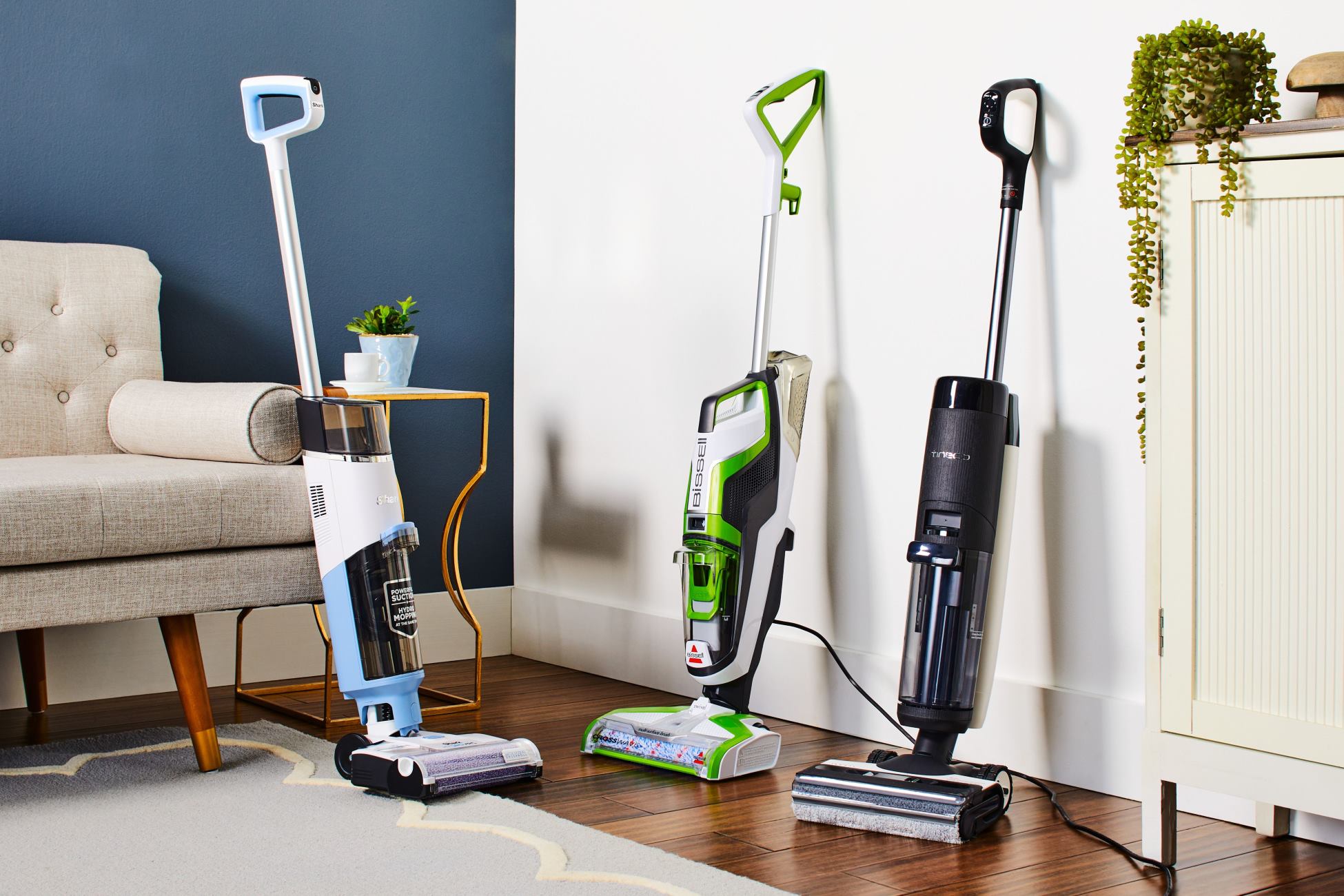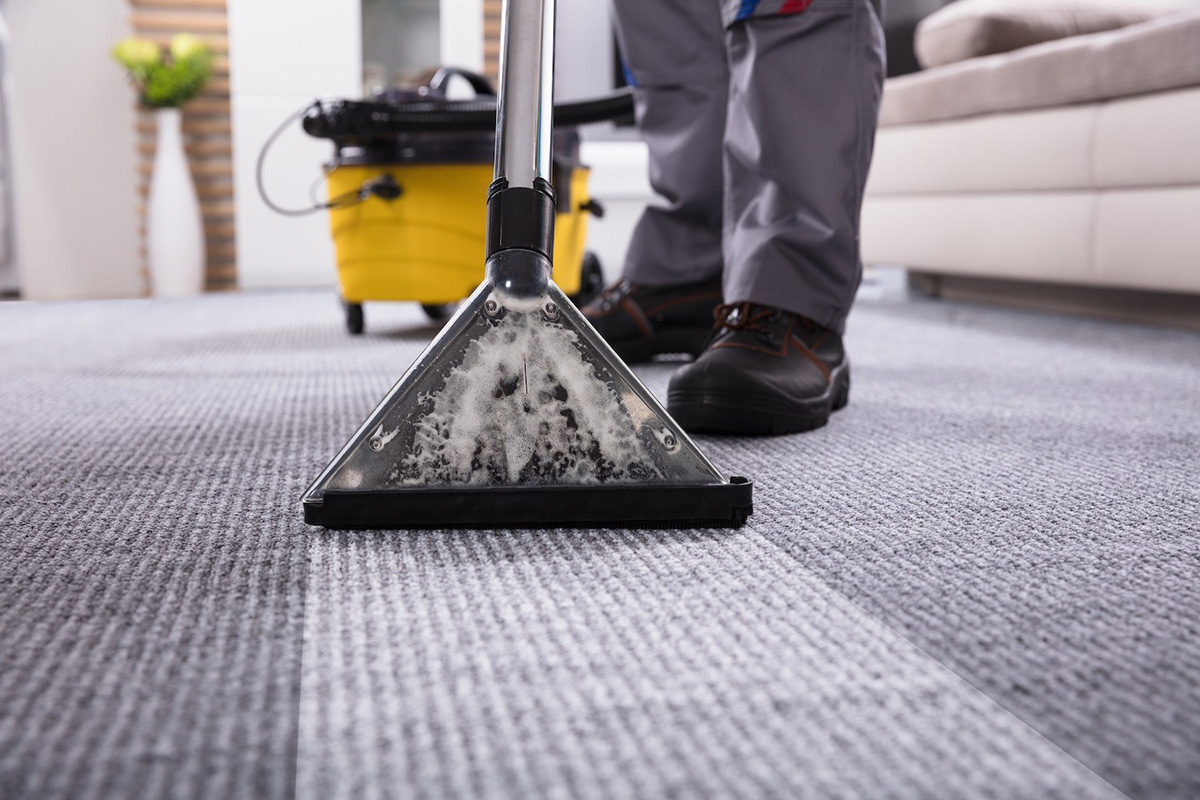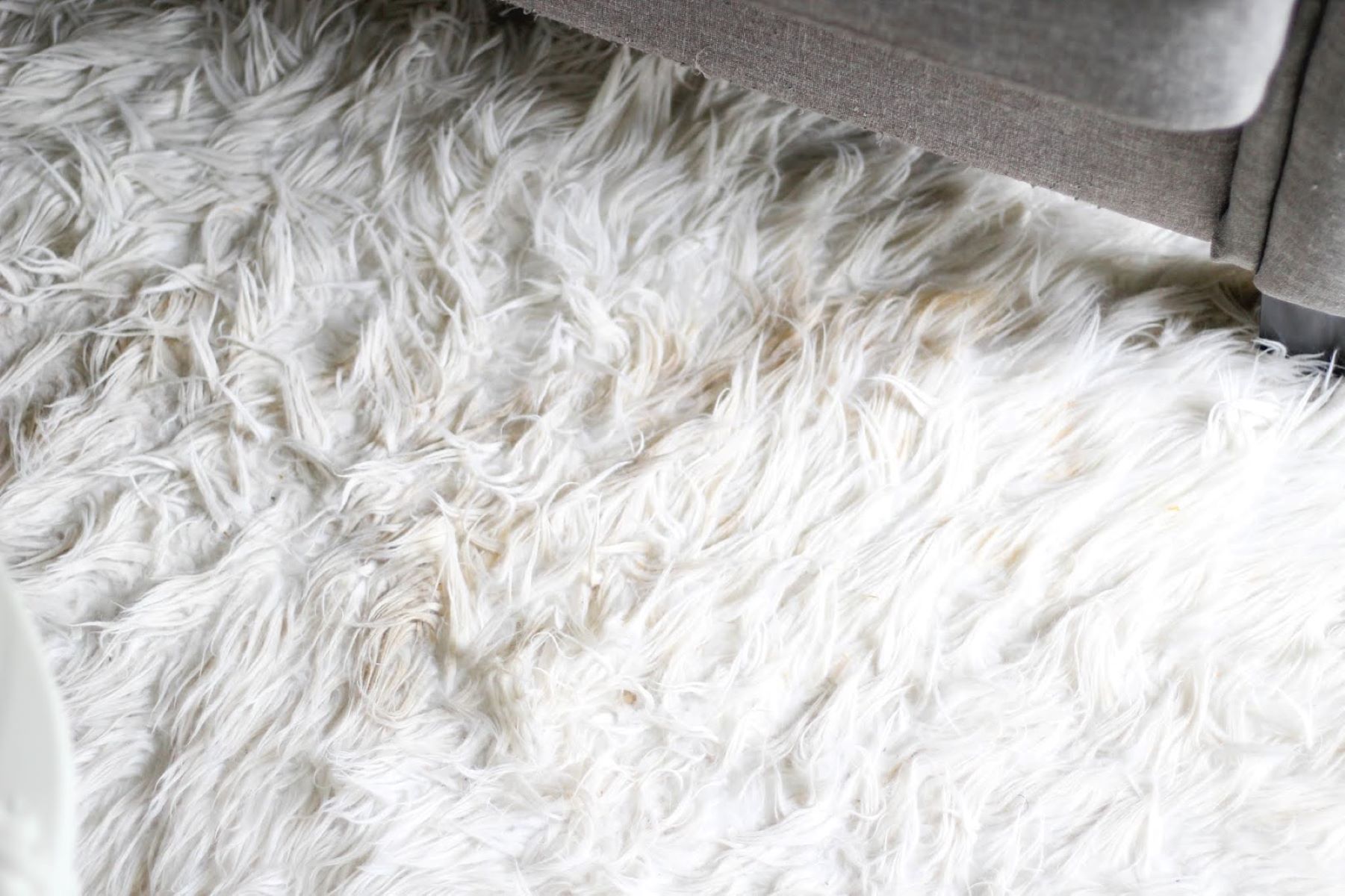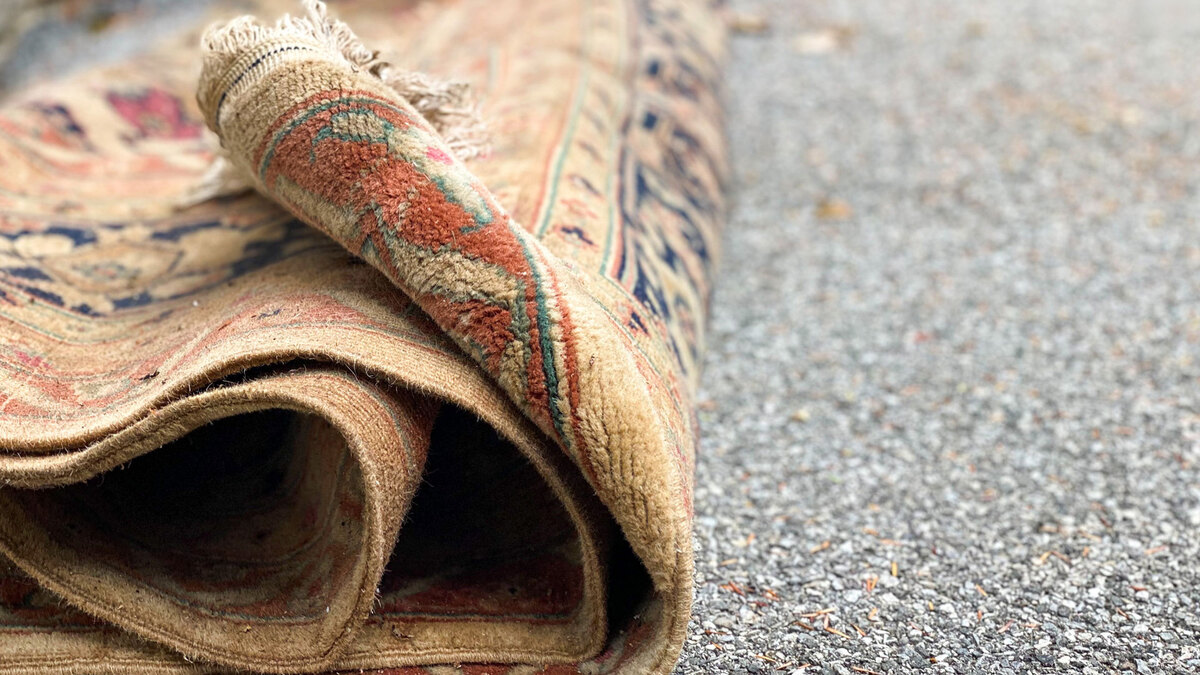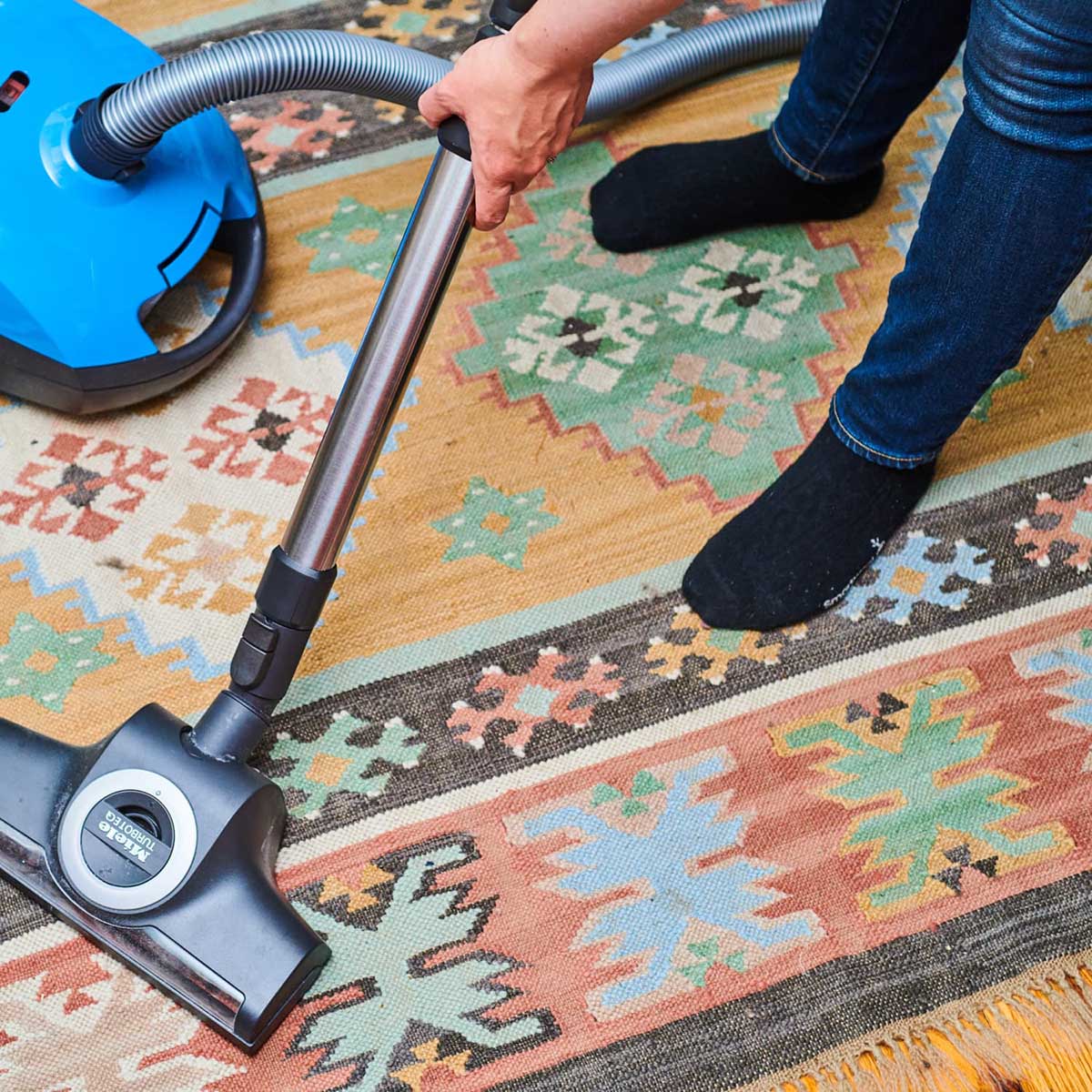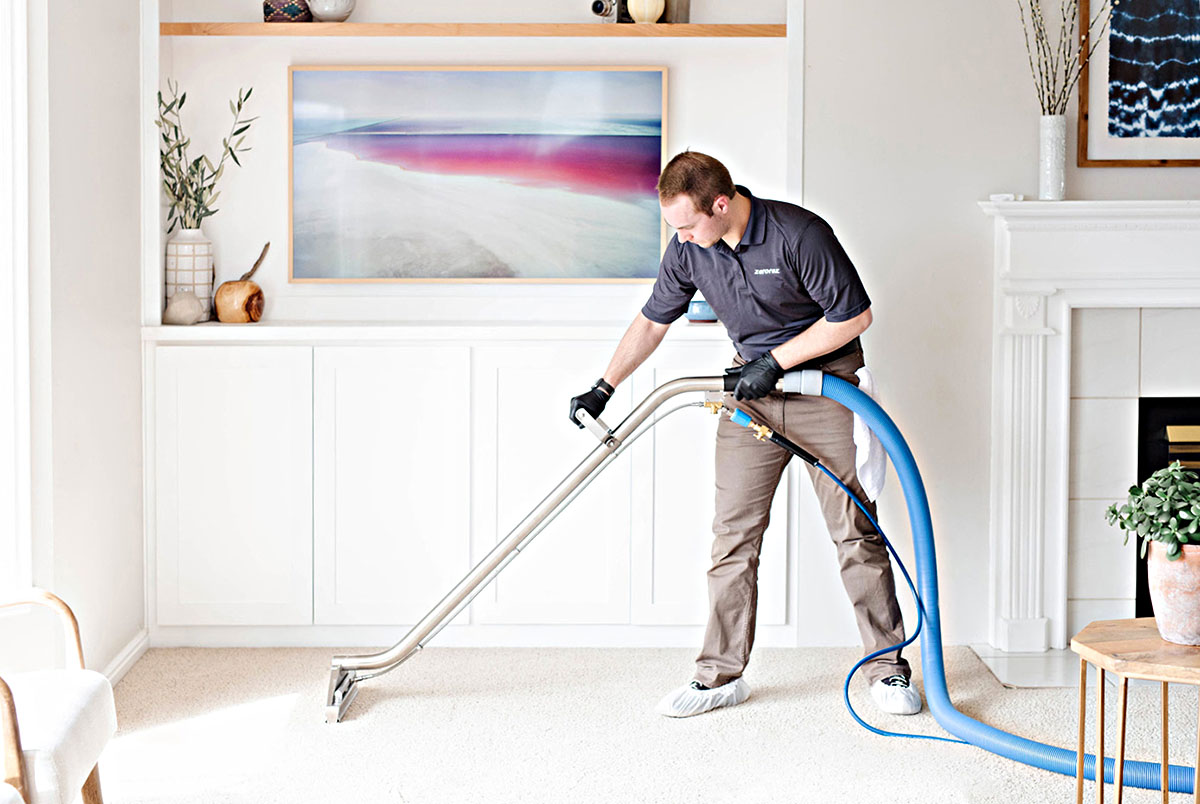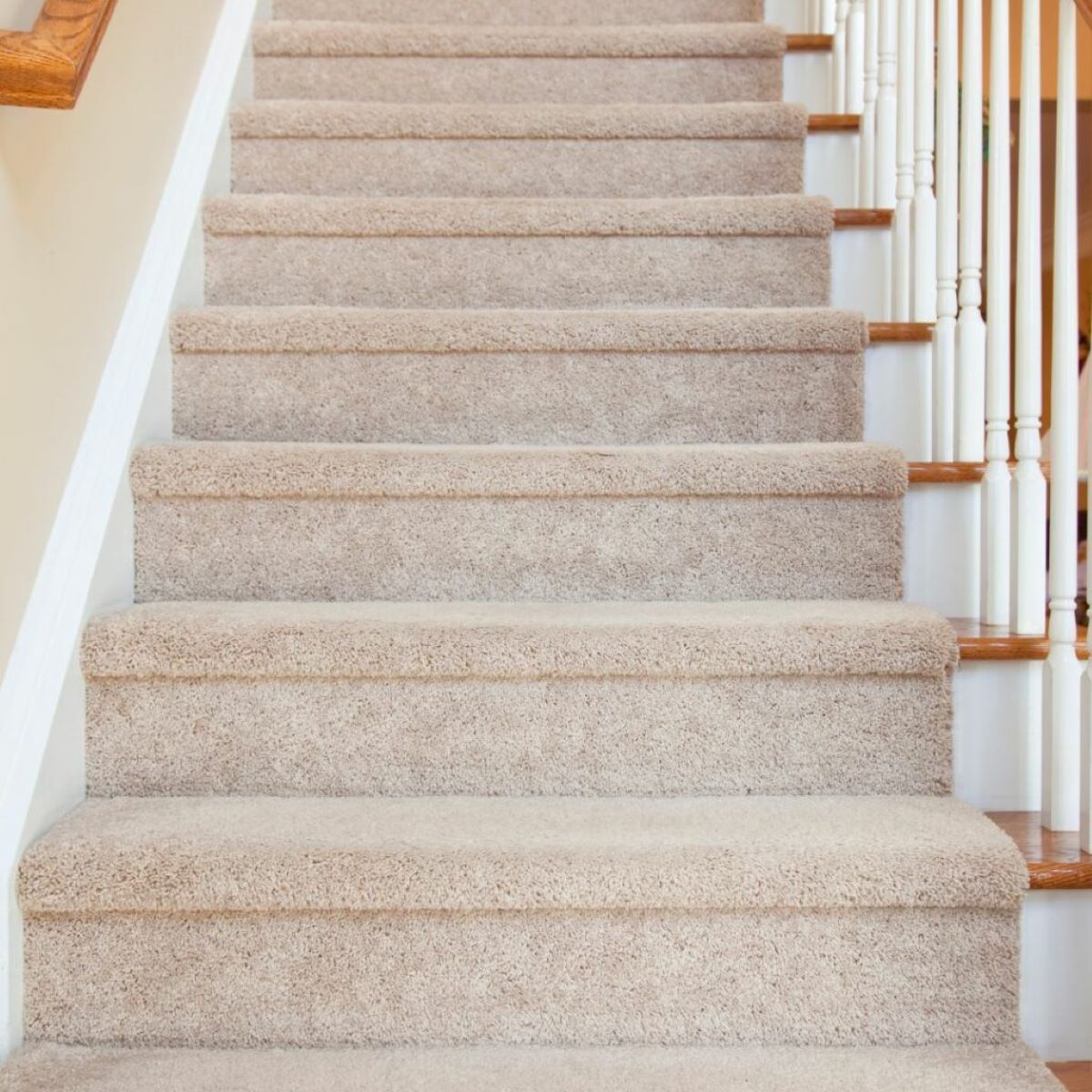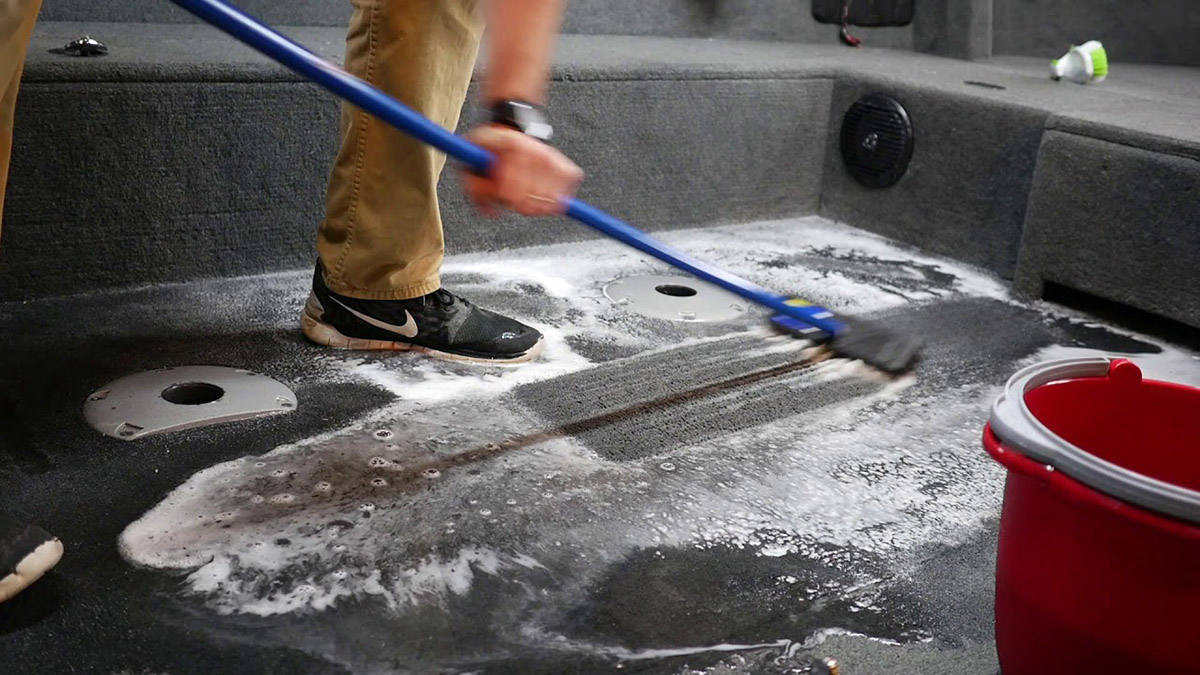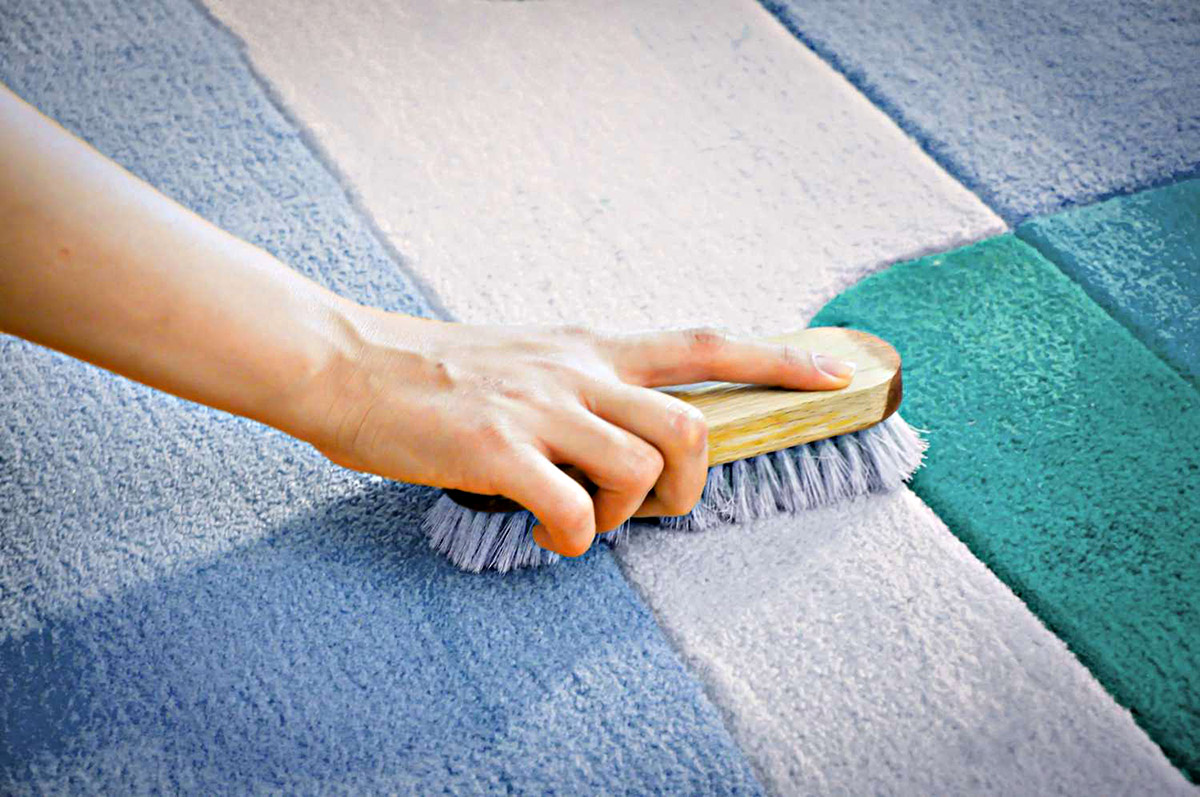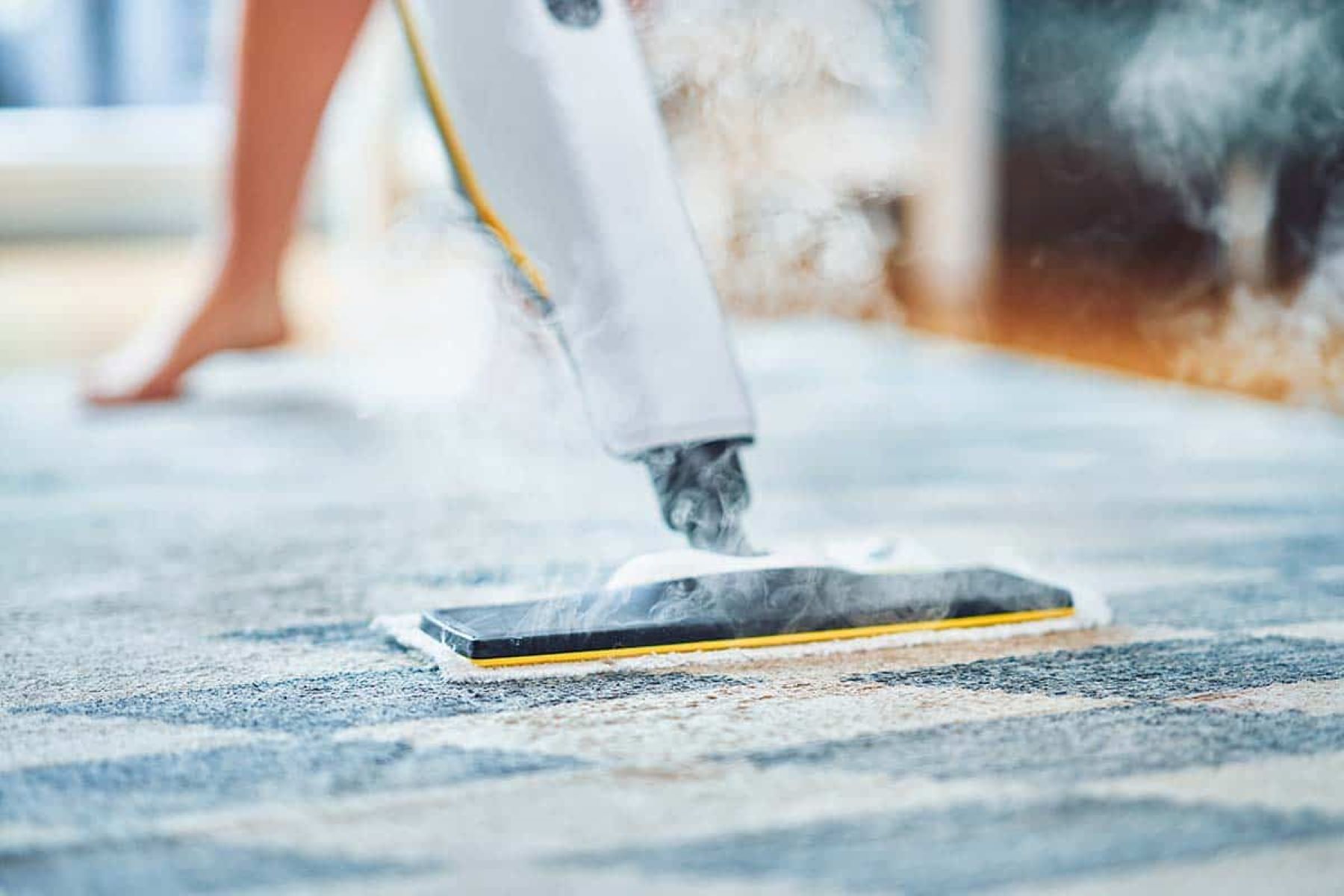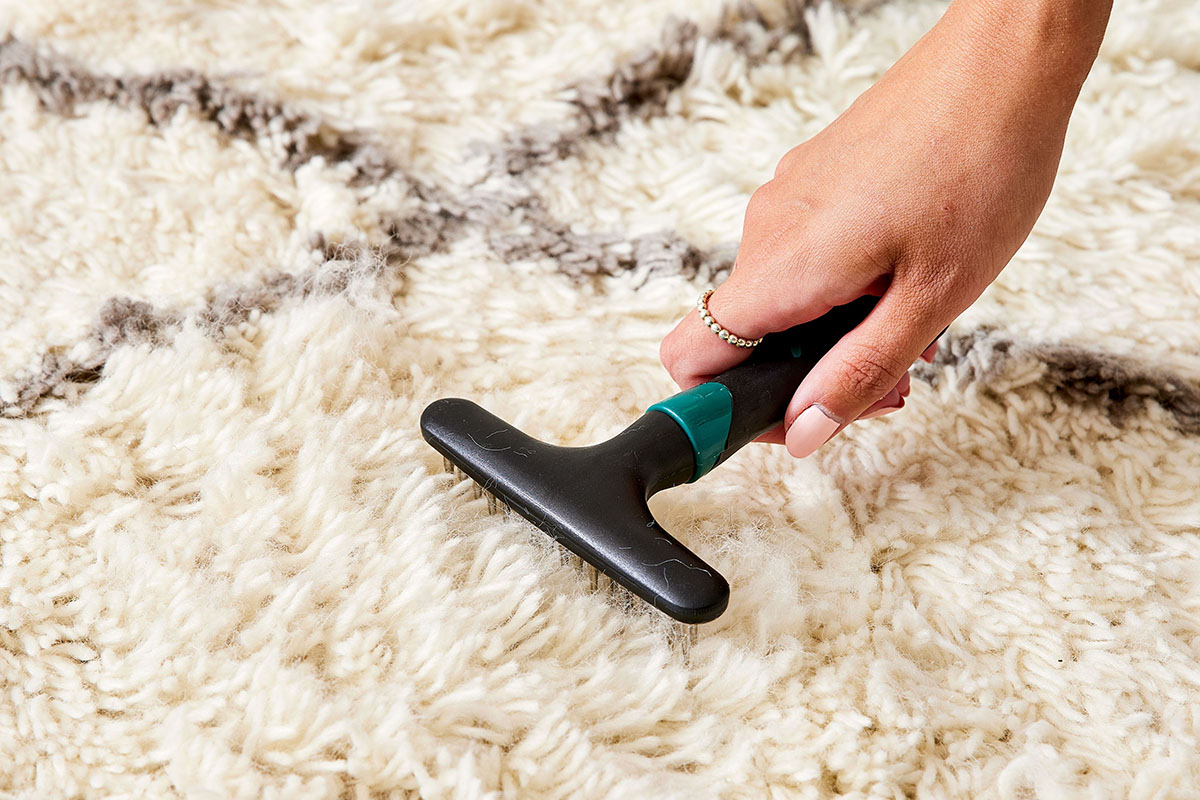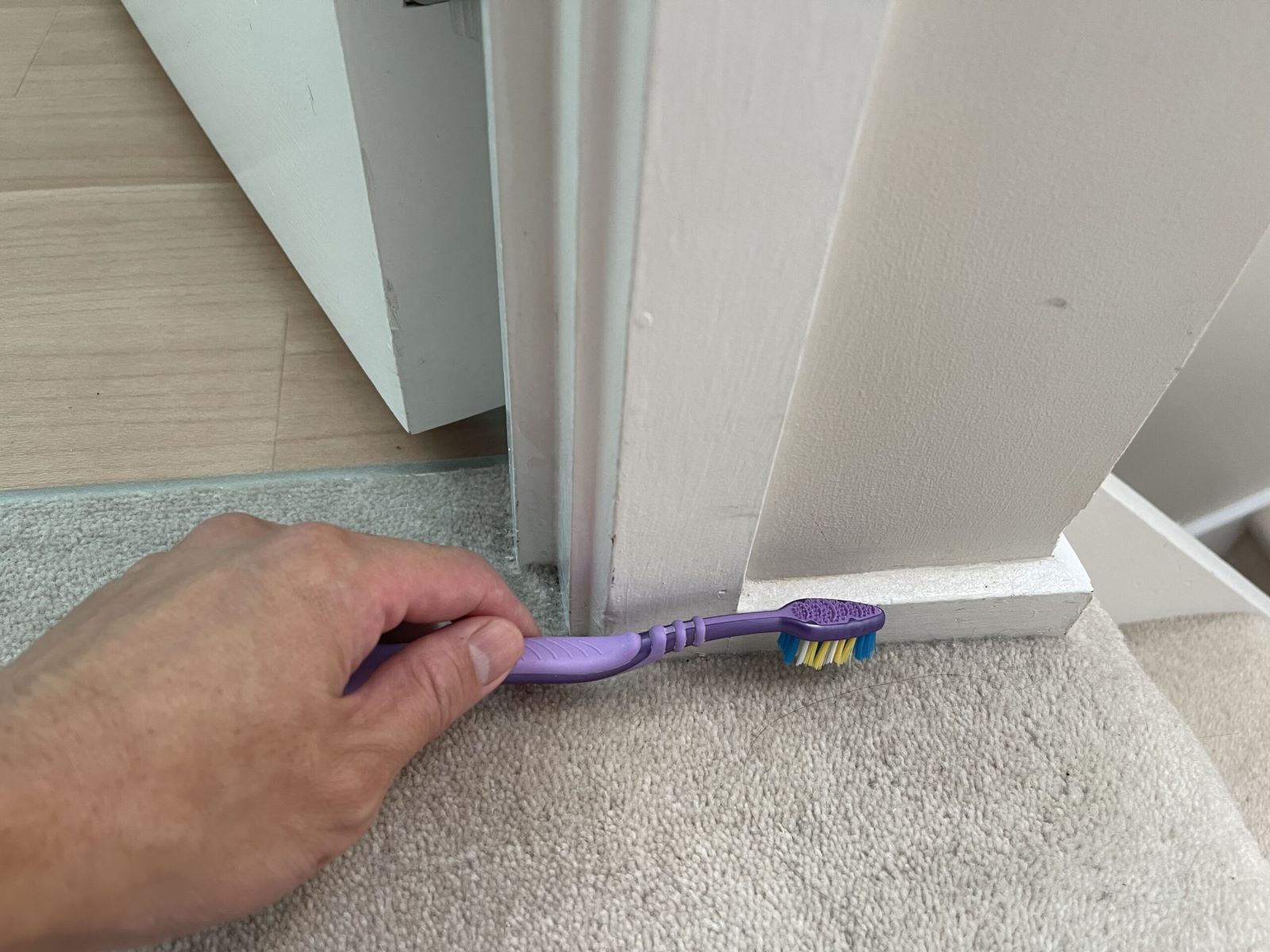

Articles
How To Clean The Edges Of A Carpet
Modified: October 28, 2024
Learn effective techniques and tools to thoroughly clean the edges of your carpet with our informative articles. Enhance the appearance and longevity of your carpet with these valuable tips.
(Many of the links in this article redirect to a specific reviewed product. Your purchase of these products through affiliate links helps to generate commission for Storables.com, at no extra cost. Learn more)
Introduction
When it comes to keeping your carpets clean, most people focus on the visible areas. But what about the edges of your carpet? Those often neglected spaces can accumulate dirt, dust, and debris, often giving your carpet an untidy and unkempt appearance. Cleaning the edges of your carpet is just as important as cleaning the rest of it.
Not only does cleaning the edges of the carpet improve its overall appearance, but it also helps in maintaining its longevity and prevents dirt and dust from being tracked onto the rest of the floor. If neglected, the dirt and grime buildup can lead to discoloration and even damage the carpet fibers.
In this article, we will guide you on how to effectively clean the edges of your carpet. From preparing the area to using the right tools and techniques, we will cover everything you need to know to ensure a thorough and efficient cleaning process.
So, roll up your sleeves and get ready to transform your carpet edges from neglected to pristine!
Key Takeaways:
- Neglecting the edges of your carpet can lead to dirt buildup, allergens, and damage. Regularly cleaning the edges maintains cleanliness, longevity, and a well-groomed appearance throughout your carpeted space.
- Proper preparation, vacuuming, brushing, and applying cleaner are essential for effective carpet edge cleaning. Removing excess moisture and drying thoroughly ensures a clean and pristine carpet.
Read more: How To Seal Carpet Edges At Home
Understanding the Importance of Cleaning Carpet Edges
When it comes to carpet cleaning, many people tend to focus only on the main surface area and overlook the edges. However, neglecting the edges of your carpet can lead to a number of issues. Let’s explore why cleaning carpet edges is so important.
Firstly, dirt, dust, and debris tend to accumulate along the edges of the carpet. This can be due to factors such as foot traffic, pet hair, or even the movement of air in the room. Over time, these particles can settle deep into the carpet fibers, making them difficult to remove. If left unattended, this buildup can not only make your carpet look dirty and dingy, but it can also contribute to allergens and pollutants in the indoor air.
Secondly, neglecting the carpet edges can lead to the accumulation of dirt and debris along the baseboards and under furniture. This can create an unsightly mess that is not only difficult to clean but can also cause damage to the surrounding surfaces. Regularly cleaning the edges of your carpet helps prevent this debris from spreading to other areas of your home.
Additionally, regular cleaning of carpet edges helps maintain the overall longevity of your carpet. Dirt and dust particles that build up over time can become abrasive and wear down the carpet fibers. By properly maintaining and cleaning the edges, you can extend the lifespan of your carpet.
Furthermore, from an aesthetic perspective, cleaning the edges of your carpet helps to maintain a consistent and well-groomed appearance throughout the entire carpeted area. It ensures that there are no visible dirt lines or build-up along the edges, which can detract from the overall appeal of your space.
Overall, understanding the importance of cleaning carpet edges is essential for maintaining the cleanliness, longevity, and appearance of your carpeted floors. By incorporating regular edge cleaning into your carpet maintenance routine, you can enjoy a cleaner and healthier living environment.
Preparing for the Cleaning Process
Before you start cleaning the edges of your carpet, it’s important to properly prepare the area. Taking the time to prepare will ensure that the cleaning process goes smoothly and effectively. Follow these steps to ensure a successful cleaning session:
1. Clear the Area: Start by removing any obstacles such as furniture or decor that may be in the way. This will give you easier access to the edges of the carpet and prevent any potential damage to the items.
2. Vacuum the Entire Carpet: Before focusing on the edges, it’s crucial to thoroughly vacuum the entire carpeted area. This will help remove loose dirt and debris, making the edge cleaning process more efficient.
3. Inspect for Loose Threads or Damage: Take a moment to inspect the edges of the carpet for any loose threads or damage. If you come across any issues, it’s best to address them before proceeding with the cleaning process to avoid further damage.
4. Gather the Necessary Cleaning Supplies: Gather the cleaning supplies you will need for the process. This typically includes a vacuum cleaner, carpet brush or soft-bristled brush, carpet cleaner, and clean cloths or towels.
5. Test the Carpet Cleaner: If you are using a new carpet cleaner, it’s important to do a patch test in an inconspicuous area to ensure it doesn’t cause any discoloration or damage to the carpet fibers.
6. Put on Protective Gear (Optional): While not necessary, you may consider wearing gloves or protective gear to prevent any skin irritation or exposure to chemicals during the cleaning process.
7. Clear the Surrounding Floor: In case any cleaning solution or moisture drips onto the surrounding floor, it’s best to clear the area or place protective sheets or towels to avoid any potential damage.
By following these preparatory steps, you can create a clean and organized space to effectively clean the edges of your carpet. Preparation is key to ensuring a successful and efficient cleaning process.
Vacuuming the Edges of the Carpet
Once you have prepared the area, it’s time to start the cleaning process by vacuuming the edges of the carpet. Vacuuming is an essential first step as it helps to remove loose dirt and debris, making the subsequent cleaning more effective. Here’s how to vacuum the edges of your carpet:
1. Attach the appropriate vacuum attachment: Start by attaching a crevice tool or a small brush attachment to your vacuum cleaner. These specialized attachments are designed to reach and clean the edges of the carpet more effectively.
2. Begin at the corner: Begin at one corner of the room and work your way along the edges of the carpet. Hold the attachment parallel to the edge of the carpet and guide it slowly along the edge, making overlapping passes to ensure thorough cleaning.
3. Apply gentle pressure: Apply gentle but consistent pressure as you vacuum to ensure that the suction effectively pulls up any dirt or debris lodged along the edge. Avoid pressing too hard, as this may damage the carpet fibers.
4. Move furniture, if necessary: If there are larger furniture pieces close to the edges, move them slightly to vacuum the carpet underneath. This will help ensure a thorough cleaning and prevent any debris from being trapped beneath the furniture.
5. Pay attention to hard-to-reach areas: Focus on hard-to-reach areas such as corners, where dirt and debris tend to accumulate. Use the crevice tool to get into these tight spaces and ensure a comprehensive cleaning.
6. Repeat the process on all edges: Continue vacuuming along all edges of the carpet until you have covered the entire room. Take your time and be thorough to ensure that you remove as much dirt and debris as possible.
7. Empty or replace the vacuum bag: Regularly check and empty the vacuum bag or container as needed to maintain optimal suction. A full bag can reduce the vacuum’s effectiveness in removing dirt and debris from the carpet.
Vacuuming the edges of your carpet is an important step in keeping them clean and free from debris. By following these steps, you will effectively remove loose dirt and prepare the edges for further cleaning.
Using a Carpet Brush to Remove Dirt and Debris
Vacuuming alone may not always be sufficient to remove stubborn dirt and debris from the edges of your carpet. In such cases, using a carpet brush can be highly effective in agitating and loosening the dirt, making it easier to remove. Here’s how to use a carpet brush to remove dirt and debris:
1. Choose the right carpet brush: There are various types of carpet brushes available, such as rubber bristle brushes or brush attachments for handheld vacuums. Select a brush that is appropriate for the type of carpet you have and the extent of dirt and debris buildup.
2. Prep the brush: Make sure the carpet brush is clean and free from any debris or hair. If necessary, wash or rinse the brush with warm water and mild soap to remove any residual dirt or dust.
3. Begin at the corner: Start at one corner of the carpet and work your way along the edge. Hold the carpet brush at a slight angle and apply light pressure as you move the brush back and forth along the edge.
4. Brush in small sections: Divide the edge of the carpet into smaller sections to ensure thorough cleaning. Focus on one section at a time, gently agitating the brush to loosen any embedded dirt or debris.
5. Use short, brisk strokes: Using short, brisk strokes, move the brush along the edge of the carpet. This motion helps to dislodge dirt and debris without causing damage to the carpet fibers.
6. Pay attention to hard-to-reach areas: Pay special attention to hard-to-reach areas such as corners or areas near baseboards. By using the brush to agitate these areas, you can loosen and remove any dirt or debris that may be hiding there.
7. Brush away from the carpet: When brushing, ensure that you brush away from the carpet rather than towards it. This prevents any dislodged dirt or debris from falling back onto the carpet and undoing your cleaning efforts.
8. Frequently clean the brush: As you work, clean the brush periodically to prevent it from becoming overloaded with dirt and debris. Simply wipe or brush off any accumulated dirt onto a paper towel or dispose of it appropriately.
9. Continue until all edges are brushed: Repeat the brushing process along all edges of the carpet until you have covered the entire area. Take your time and be thorough to ensure that all dirt and debris are effectively removed.
Using a carpet brush is an excellent method for removing stubborn dirt and debris from the edges of your carpet. By following these steps, you can achieve a deep and thorough cleaning, leaving your carpet’s edges fresh and dirt-free.
Read more: How To Keep Carpet Edges From Fraying
Applying Carpet Cleaner to the Edges
In addition to vacuuming and brushing, applying a carpet cleaner to the edges of your carpet can help to lift and remove any remaining dirt, stains, or odors. Here’s how to effectively apply carpet cleaner to the edges:
1. Choose the right carpet cleaner: Select a carpet cleaner that is appropriate for your specific carpet type and the nature of the stains or dirt on your carpet edges. Read the instructions on the cleaner’s label for guidance.
2. Test the cleaner on a small, inconspicuous area: Before applying the carpet cleaner to the edges of your carpet, it’s essential to conduct a patch test in a small, inconspicuous area. This will ensure that the cleaner does not cause any discoloration or damage.
3. Dilute the carpet cleaner, if necessary: Depending on the instructions provided by the manufacturer, you may need to dilute the carpet cleaner with water. Follow the recommended dilution ratio to ensure the optimal effectiveness of the cleaner.
4. Apply the diluted carpet cleaner: Using a clean cloth or sponge, apply a small amount of the diluted carpet cleaner to the edge of the carpet. Start with a small area, as you can always apply more cleaner if needed.
5. Gently blot or rub the cleaner into the carpet: Using gentle pressure, lightly blot or rub the carpet cleaner into the edge of the carpet. This will help to agitate and lift any dirt, stains, or odors that are present.
6. Work in sections: Divide the edge of the carpet into manageable sections and focus on one section at a time. This approach will ensure thorough coverage and prevent the cleaner from drying out before you can properly clean it.
7. Let the cleaner sit for the recommended time: Refer to the instructions on the carpet cleaner label and allow the cleaner to sit on the edges of the carpet for the recommended duration. This will give the cleaner time to penetrate and break down any stubborn stains or odors.
8. Avoid oversaturation: Be careful not to oversaturate the carpet edges with the cleaner, as excessive moisture can lead to damage or mold growth. Use a minimal amount of cleaner and ensure that the cloth or sponge is only damp, not soaking wet.
9. Blot up excess moisture: After allowing the carpet cleaner to work on the edges, use a clean, dry cloth or paper towel to blot up any excess moisture. This will help to remove the loosened dirt and cleaner residue from the carpet.
Applying a carpet cleaner to the edges of your carpet can help to eliminate stubborn stains, odors, and deep-seated dirt. By following these steps, you can effectively apply the cleaner and prepare the carpet edges for the next cleaning stage.
Use a vacuum cleaner with a crevice tool to clean the edges of a carpet. Run the tool along the edges to remove dust, dirt, and debris that may have accumulated.
Scrubbing the Edges with a Soft Bristled Brush
After applying the carpet cleaner to the edges, the next step is to scrub the carpet edges with a soft-bristled brush. This process helps to agitate the cleaner, further loosen dirt, and lift stubborn stains. Here’s how to effectively scrub the edges of your carpet:
1. Choose the right brush: Select a soft-bristled brush that is suitable for your carpet type. Avoid using brushes with stiff or abrasive bristles, as they may damage the carpet fibers.
2. Start at a corner: Begin at one corner of the carpet edge and work your way along the edge. Hold the brush at a slight angle and apply gentle pressure as you scrub the carpet fibers.
3. Use short, back-and-forth motions: Use short, back-and-forth motions with the brush to agitate the carpet cleaner and loosen any dirt or stains. Focus on the areas where the cleaner was applied, but also work on the surrounding area to ensure a thorough cleaning.
4. Pay attention to problem areas: Give extra attention to any particularly stubborn stains or heavily soiled areas. Scrub these areas a bit longer to help lift and remove the dirt or stain from the carpet.
5. Work in small sections: Divide the edge of the carpet into smaller sections to ensure a systematic and thorough scrubbing process. This approach allows you to maintain control and focus on one area at a time.
6. Avoid excessive pressure: While it’s important to apply some pressure to effectively scrub the carpet, avoid pressing too hard as it can damage the carpet fibers. Gentle but firm pressure is sufficient to agitate and lift the dirt and stains.
7. Rinse the brush frequently: Rinse the brush with clean water periodically to remove any dirt or debris that may have accumulated on the bristles. This ensures that the brush remains effective throughout the scrubbing process.
8. Blot up excess moisture: As you scrub the carpet edges, you may notice excess moisture from the cleaner. Use a clean, dry cloth or towel to blot up any moisture to prevent over-saturation of the carpet.
9. Evaluate results and repeat if needed: After scrubbing the edges, evaluate the results. If there are still visible stains or areas that require more cleaning, repeat the scrubbing process with the soft-bristled brush until satisfied with the cleanliness of the carpet edges.
Scrubbing the edges of your carpet with a soft-bristled brush helps to agitate and lift dirt, stains, and residue left by the carpet cleaner. By following these steps, you can ensure a thorough and effective cleaning of the carpet edges.
Removing Excess Moisture and Residue
Once you have finished scrubbing the edges of your carpet, it’s important to remove any excess moisture and residue left behind by the cleaning process. Removing these can prevent any potential damage or mold growth. Here’s how you can effectively remove excess moisture and residue:
1. Blot the edges with a clean cloth or towel: Start by using a clean, dry cloth or towel to gently blot the carpet edges. Press down lightly to absorb any excess moisture that may be present.
2. Repeat the blotting process: If the cloth or towel becomes saturated, switch to a fresh one and continue blotting. Repeat the process until there is no more visible moisture on the cloth.
3. Use a wet/dry vacuum cleaner: If there is still excess moisture on the carpet edges, you can use a wet/dry vacuum cleaner to extract it. Ensure the vacuum cleaner is set to the appropriate mode and run it over the damp areas, making several passes if necessary.
4. Allow proper ventilation: Open windows or use fans to create airflow in the room. This will help in drying out the carpet edges more quickly and prevent any lingering moisture from causing issues.
5. Avoid walking on damp carpet: While the carpet edges are drying, it’s important to avoid walking on them if possible. This prevents any dirt or debris from being transferred onto the damp carpet, interfering with the drying process.
6. Test for residue: After the carpet edges have dried, check for any residue left behind by the cleaning process. Run a clean, dry cloth along the edges to see if any residue transfers. If residue persists, repeat the cleaning process or use a carpet cleaner specifically designed for residue removal.
7. Vacuum the edges again: Once the carpet edges are completely dry and any residue has been removed, vacuum the edges again to ensure a clean and finished look. This will help to remove any loose particles that may have accumulated during the drying process.
By following these steps, you can effectively remove excess moisture and residue from the edges of your carpet. This helps to prevent any potential damage, mold growth, and ensures a clean and dry surface.
Drying the Edges of the Carpet
Properly drying the edges of your carpet is crucial to prevent any moisture-related issues such as mold and mildew growth. Here’s how you can effectively dry the edges of your carpet after cleaning:
1. Allow for sufficient airflow: Open windows and doors to promote air circulation in the room. This helps speed up the drying process by allowing moist air to escape and fresh air to come in.
2. Use fans or dehumidifiers: Place fans or dehumidifiers strategically around the room to enhance airflow and reduce humidity levels. Direct the airflow towards the carpet edges to facilitate quicker drying.
3. Avoid excessive heat: While using heat can help speed up the drying process, it’s important to avoid applying excessive heat directly to the carpet edges. High heat can potentially damage the carpet fibers or backing. Use caution when using heaters or blow dryers and maintain a safe distance.
4. Lift the carpet edges: If feasible, lift the edges of the carpet slightly to increase airflow underneath. This allows for improved ventilation and faster drying of both the carpet and the floor beneath.
5. Change damp padding, if necessary: In some cases, moisture may have penetrated the carpet padding. If this occurs and the padding remains damp despite efforts to dry it, consider replacing the affected padding to prevent mold or mildew growth.
6. Patience is key: Drying the carpet edges thoroughly may take some time. Be patient and allow adequate time for the moisture to evaporate completely. Rushing the process can compromise the results and potentially lead to further issues down the line.
7. Check for residual moisture: To ensure the carpet edges are fully dry, use a moisture meter or touch test. Gently press a clean, dry cloth against the edges to check for any remaining moisture. If the cloth stays dry, the carpet edges are likely completely dry.
8. Reinstall furniture and accessories: Once the carpet edges are completely dry, you can reinstall any furniture or accessories that were temporarily moved during the cleaning and drying process. Make sure the carpet edges are fully dry before placing any items back onto the carpet to avoid trapping moisture.
By following these steps, you can effectively dry the edges of your carpet after cleaning, ensuring a clean and moisture-free environment. Taking the time to properly dry the edges will help maintain the integrity of your carpet and prevent any potential issues associated with excess moisture.
Read more: How To Bind Carpet Edges As A DIY Project
Final Tips and Considerations
As you approach the task of cleaning the edges of your carpet, here are some final tips and considerations to keep in mind for a successful cleaning process:
1. Regular maintenance is key: Incorporate regular maintenance routines into your cleaning schedule. Regularly vacuuming and spot cleaning your carpet edges will help prevent dirt and debris buildup, making the cleaning process easier and more effective.
2. Choose the right products: Select carpet cleaning products that are appropriate for your carpet type and follow the manufacturer’s instructions for usage. Using the wrong products can lead to damage or discoloration of the carpet fibers.
3. Spot test before cleaning: Before applying any cleaning solutions or chemicals to your carpet edges, always perform a spot test in an inconspicuous area. This will help you ensure that the product doesn’t cause any adverse effects on your carpet.
4. Use protective measures: If you are using carpet cleaners or other chemicals, consider using gloves or other protective gear to safeguard your skin from any potential irritants. Additionally, place protective sheets or towels on the surrounding floor to prevent damage from spills or splashes.
5. Seek professional help if needed: If your carpet edges require extensive cleaning or if there are deep-set stains that you are unable to remove, it may be beneficial to seek the assistance of professional carpet cleaners. They have the expertise and specialized equipment to handle stubborn stains and restore the carpet’s appearance.
6. Address spills and stains promptly: When spills occur, attend to them immediately by blotting up the liquid with a clean cloth or paper towel. Avoid rubbing or scrubbing, as this can push the stain deeper into the carpet fibers.
7. Preserve a clean environment: Regularly sweeping or vacuuming the surrounding floor areas and using doormats can help minimize the amount of dirt and debris that make their way onto the carpet edges, reducing the frequency of cleaning required.
8. Hire professional carpet cleaning periodically: While regular maintenance is important, it’s also beneficial to hire professional carpet cleaners periodically to deep clean your entire carpet. This will help remove deeply embedded dirt, allergens, and stains, leaving your carpet fresh and revitalized.
By following these final tips and considerations, you can ensure effective and efficient cleaning of the edges of your carpet, giving your space a cleaner and more appealing look.
Conclusion
Cleaning the edges of your carpet may often be overlooked, but it plays a crucial role in maintaining the overall cleanliness and longevity of your carpet. By following the steps outlined in this article, you can effectively clean the edges of your carpet, transforming them from neglected to pristine.
Understanding the importance of cleaning carpet edges is the first step towards a cleaner and healthier living environment. Not only does it improve the overall appearance of your carpet, but it also helps in preventing dirt and debris from spreading to other areas of your home.
Preparing for the cleaning process by clearing the area, vacuuming the entire carpet, and gathering the necessary supplies sets the foundation for a successful cleaning session. Vacuuming the edges removes loose dirt and debris, while using a carpet brush helps in agitating and loosening stubborn dirt for easier removal.
Applying carpet cleaner to the edges and scrubbing with a soft-bristled brush further targets stains, odors, and deep-seated dirt. Removing excess moisture and residue ensures that your carpet edges are left clean and dry, reducing the risk of mold and mildew growth.
By following these steps and considering the final tips provided, you can effectively clean and maintain the edges of your carpet. Regular maintenance, spot cleaning, and prompt attention to spills and stains are key to preserving the cleanliness of your carpet edges.
In cases where deep cleaning or extensive stain removal is needed, seeking professional help is recommended. Professionals have the expertise and equipment necessary to tackle tough stains and restore the appearance of your carpet edges.
Remember, a clean and well-maintained carpet enhances the overall look and feel of your home. By regularly cleaning the edges of your carpet, you can ensure a cleaner and healthier living environment for you and your family.
So, roll up your sleeves, gather your cleaning supplies, and give your carpet edges the attention they deserve. Soon enough, your carpet edges will be rejuvenated, adding to the overall appeal and cleanliness of your space.
Frequently Asked Questions about How To Clean The Edges Of A Carpet
Was this page helpful?
At Storables.com, we guarantee accurate and reliable information. Our content, validated by Expert Board Contributors, is crafted following stringent Editorial Policies. We're committed to providing you with well-researched, expert-backed insights for all your informational needs.
